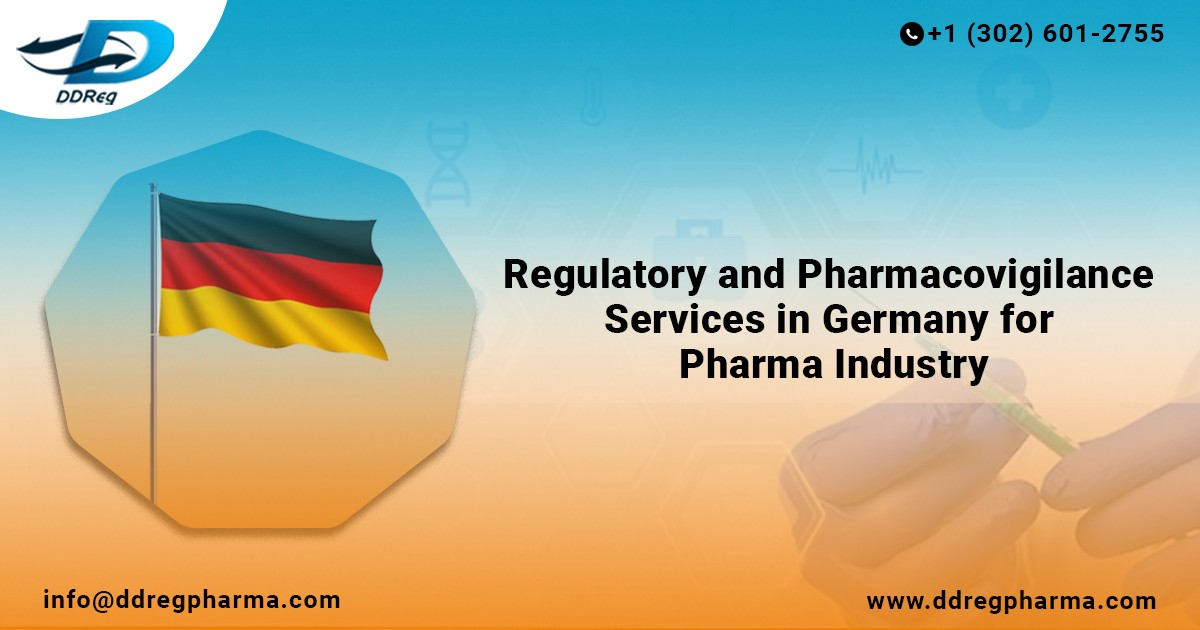Germany is at the forefront of pharmaceutical innovation and regulation. The country’s robust healthcare infrastructure and stringent regulatory framework ensure that the medicines available to the public are safe, effective, and of high quality. Pharmacovigilance and regulatory services are critical components of this system, working to monitor, evaluate, and mitigate risks associated with pharmaceutical products.
Understanding Pharmacovigilance
Pharmacovigilance involves a set of activities aimed at ensuring the safety of medicines. It encompasses the collection, analysis, and interpretation of data on the adverse effects of drugs. The primary goal is to enhance patient safety by minimizing the risks associated with medicinal products.
The Role of Pharmacovigilance in Drug Safety
Pharmacovigilance plays a pivotal role in drug safety by:
- Detecting and assessing adverse drug reactions (ADRs)
- Monitoring the effectiveness of medicines in real-world settings
- Identifying and mitigating potential risks associated with pharmaceutical products
- Ensuring that the benefits of a drug outweigh its risks
Key Components of Pharmacovigilance
Several key components form the backbone of pharmacovigilance, including:
- Adverse Event Reporting: The systematic collection of reports on adverse drug reactions from healthcare professionals, patients, and pharmaceutical companies.
- PV Signal Detection: The process of identifying new safety concerns from the data collected.
- PV Risk Management: Implementing strategies to minimize identified risks, such as drug labeling changes or product withdrawal from the market.
- Periodic Safety Update Reports (PSURs): Regular reports submitted by pharmaceutical companies to regulatory authorities, summarizing the safety profile of a drug.
Regulatory Services in Germany
Regulatory services are essential to ensure that pharmaceutical products meet the required safety, efficacy, and quality standards. In Germany, several regulatory bodies and frameworks oversee these processes.
The Role of Regulatory Authorities
Germany’s primary regulatory authority for medicines is the Federal Institute for Drugs and Medical Devices (BfArM). Other significant bodies include the Paul Ehrlich Institute (PEI) for vaccines and biomedicines and the European Medicines Agency (EMA) for EU-wide regulatory oversight.
Key Regulatory Frameworks
The regulatory framework in Germany is comprehensive and includes:
- Marketing Authorization: The process through which a pharmaceutical product is approved for market release.
- Good Pharmacovigilance Practices (GVP): Guidelines outlining the responsibilities of pharmaceutical companies and regulatory authorities in monitoring drug safety.
- Clinical Trials Regulation: Ensuring that clinical trials Services are conducted ethically and scientifically, protecting the rights and safety of participants.
Importance of Pharmacovigilance and Regulatory Services
Pharmacovigilance and regulatory affairs services are integral to maintaining public health. They ensure that medicines are not only effective but also safe for consumption. By identifying and managing risks, these services protect patients from potential harm and contribute to the overall trust in the healthcare system.
Challenges in Pharmacovigilance and Regulatory Services
Despite the robust framework, several challenges persist:
- Data Management: The vast amount of data collected requires sophisticated systems for analysis and interpretation.
- Globalization: With the global distribution of pharmaceuticals, harmonizing regulatory standards across countries can be challenging.
- Technological Advancements: Keeping pace with rapid technological advancements and integrating new methodologies into existing frameworks.
The Future of Pharmacovigilance and Regulatory Services
The future of Pharmacovigilance Consulting Services is likely to be shaped by advancements in technology and data science. Artificial intelligence and machine learning can enhance signal detection and data analysis. Additionally, real-world evidence (RWE) will play a more significant role in assessing drug safety and efficacy.
Implementing Effective Pharmacovigilance Systems
Effective pharmacovigilance systems require a collaborative approach involving various stakeholders, including regulatory authorities, pharmaceutical companies, healthcare professionals, and patients.
Key Strategies for Effective Pharmacovigilance
- Training and Education: Continuous training for healthcare professionals and staff involved in pharmacovigilance activities.
- Robust Reporting Systems: User-friendly systems for reporting adverse events.
- Public Awareness: Educating patients about the importance of reporting adverse reactions.
Case Studies: Pharmacovigilance in Action
Examining case studies can provide valuable insights into the practical application of pharmacovigilance. For example, the withdrawal of the anti-inflammatory drug rofecoxib (Vioxx) from the market highlighted the importance of post-market surveillance in identifying serious adverse effects.
Collaborative Efforts in Pharmacovigilance
Collaboration between different countries and organizations is crucial for effective pharmacovigilance. International initiatives, such as the WHO Programme for International Drug Literature Monitoring Services, facilitate the sharing of safety information and best practices.
Pharmacovigilance and Regulatory Services in Germany
Pharmacovigilance in Germany are recognized globally for their rigor and efficiency. The country’s robust framework ensures that pharmaceutical products are safe and effective, protecting public health. This section delves deeper into the specifics of pharmacovigilance and regulatory services in Germany.
Regulatory Bodies and Their Roles
Germany has several regulatory bodies responsible for overseeing pharmacovigilance and regulatory services. The Federal Institute for Drugs and Medical Devices (BfArM) and the Paul Ehrlich Institute (PEI) are the primary authorities. BfArM is responsible for the authorization and monitoring of medicinal products, while PEI focuses on vaccines and biomedicines.
Processes and Procedures
The processes and procedures involved in pharmacovigilance and regulatory services are comprehensive. They include:
- Clinical Trials Oversight: Ensuring that clinical trials are conducted ethically and in accordance with scientific standards.
- Post-Market Surveillance: Continuous monitoring of pharmaceutical products after they have been released on the market to identify any adverse effects.
- Risk Management Plans: Developing and implementing strategies to mitigate identified risks.
Technological Innovations in Pharmacovigilance
Technological advancements are revolutionizing pharmacovigilance. The use of big data, artificial intelligence, and machine learning is enhancing the ability to detect and analyze adverse drug reactions more efficiently.
Artificial Intelligence and Machine Learning
AI and machine learning can process vast amounts of data quickly, identifying patterns and signals that might be missed by traditional methods. These technologies are particularly useful in signal detection and risk assessment.
Big Data and Real-World Evidence
The integration of big data and real-world evidence (RWE) into pharmacovigilance processes allows for a more comprehensive understanding of a drug’s safety profile. RWE can provide insights into how a drug performs in real-world settings, beyond the controlled environment of clinical trials.
Global Harmonization of Pharmacovigilance Practices
Global harmonization of pharmacovigilance practices is essential for ensuring consistent drug safety standards worldwide. Organizations like the International Council for Harmonisation of Technical Requirements for Pharmaceuticals for Human Use (ICH) work towards harmonizing regulatory requirements across different countries.
The Impact of Pharmacovigilance on Public Health
The impact of pharmacovigilance on public health cannot be overstated. By ensuring the safety and efficacy of medicines, pharmacovigilance protects patients from potential harm and contributes to the overall well-being of society.
Improving Patient Safety
Effective pharmacovigilance systems improve patient safety by promptly identifying and addressing adverse drug reactions. This helps prevent harm and enhances the overall quality of healthcare.
Enhancing Trust in Healthcare Systems
By maintaining high standards of drug safety, pharmacovigilance fosters trust in the healthcare system. Patients are more likely to adhere to their medication regimens and seek medical care when they trust that their treatments are safe.
Challenges and Opportunities in Pharmacovigilance
Despite its importance, pharmacovigilance faces several challenges. However, these challenges also present opportunities for improvement and innovation.
Data Overload
The sheer volume of data generated from various sources can be overwhelming. Implementing advanced data management and analysis tools can help address this challenge.
Global Collaboration
Harmonizing pharmacovigilance practices across different countries can be challenging due to varying regulatory requirements. However, increased global collaboration can lead to more consistent and effective drug safety monitoring.
Conclusion
Pharmacovigilance and regulatory services in Germany are vital components of the healthcare system, ensuring that pharmaceutical products are safe, effective, and of high quality. Through continuous monitoring, rigorous assessment, and the implementation of risk management strategies, these services protect public health and maintain trust in the healthcare system. As technology and global collaboration continue to evolve, the future of pharmacovigilance service holds great promise for further enhancing drug safety and patient care. https://dmarket360.com/





